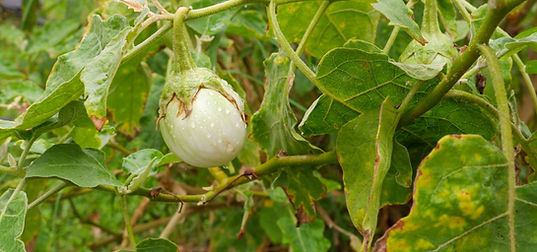

Did you know....
Discover the exciting world of our ingredients and spices! Did you know that each ingredient not only looks unique, but also has a fantastic meaning? Let yourself be carried away by the tempting aromas and vibrant colors and learn the exciting stories behind our carefully selected ingredients!

kaffir lime leaves
The kaffir lime (Citrus hystrix) is a small tree or shrub from the citrus family. The plant probably originates from the Malay Peninsula, but is now widespread in large parts of Southeast Asia. Other names for the plant include “kaffir lime”, “makrut lime” or “Mauritius papeda”.

water spinach
Water spinach (Ipomoea aquatica) is a plant species from the morning glory genus (Ipomoea). Water spinach is cultivated for food production, and its leaves are used primarily in Asian cuisine .

Chinese cabbage
The origin of the Chinese cabbage we know today lies in China, as the name suggests. It is also called the "tooth of the white dragon" . In the last century (1970s) this also found its way to America and Europe, where it is now cultivated on a large scale. Chinese cabbage is eaten raw, fried or pickled. It is believed that Chinese cabbage was created by crossing two other types of cabbage. Chinese cabbage pomegranate forms tall, slender, closed heads with a pleasantly mild taste. Light frosts are no problem for Chinese cabbage.

lemongrass
Lemongrass (Cymbopogon citratus ), also known more precisely as West Indian lemongrass, West Indian lemongrass, Guatemalan lemongrass or sereh, is a plant species within the grass family (Poaceae). This species and some other Cymbopogon species are cultivated and used as a spice and medicinal plant .

Thai basil
Thai basil (Ocimum basilicum) , also called “sweet basil,” has purple stems and green tapered leaves and is one of three types of basil used in Southeast Asia: it is used in curries, soups and stir-fries.

asparagus beans
Did you know where Thai asparagus (Vigna unguiculata subsp. sesquipedalis) gets its appetizing green color? It's simple: it grows above ground and soaks up a lot of sun. This not only gives it its characteristic color, but also its particularly fresh taste. Incidentally, German asparagus was also green for many centuries! At the end of the 19th century, it became a trend to grow a white variety by completely protecting the asparagus stalks from sunlight until harvest.

Thai eggplant
The Thai eggplant (Solanum melongena L.) is an annual , herbaceous plant that grows to a height of around 80 centimetres. The leaves are serrated; the stems and leaf veins have thorns. The Thai eggplant is widespread in subtropical and tropical regions of Asia, where it is cultivated as a vegetable. It prefers sandy, not too dry soil, and therefore often grows along river banks in its native region. The white flowers appear in temperate latitudes from July onwards; the yellow-green marbled fruits are formed from September onwards and are harvested when they are about the size of a golf ball . In its natural habitat, the plant flowers between November and May. It bears fruit there from June to September.
.jpg)
Thai celery
Thai celery (Apium graveolens) is a fast-growing vegetable celery that is closely related to our celery. However, its hollow stems and leaves are smaller and more delicate than those of its European relatives. Unlike celery, whose leaves are usually quite hard, the tender leaves of Thai celery are also used for salads and other dishes.

Thai chili
The Thai chili (Capsicum annuum) is a fiery hot chili with pointed, upright fruits. The low, bushy plants produce countless, thin-fleshed fruits that are about 3-4 cm long and ripen from green to red. Ideal chili for drying.
